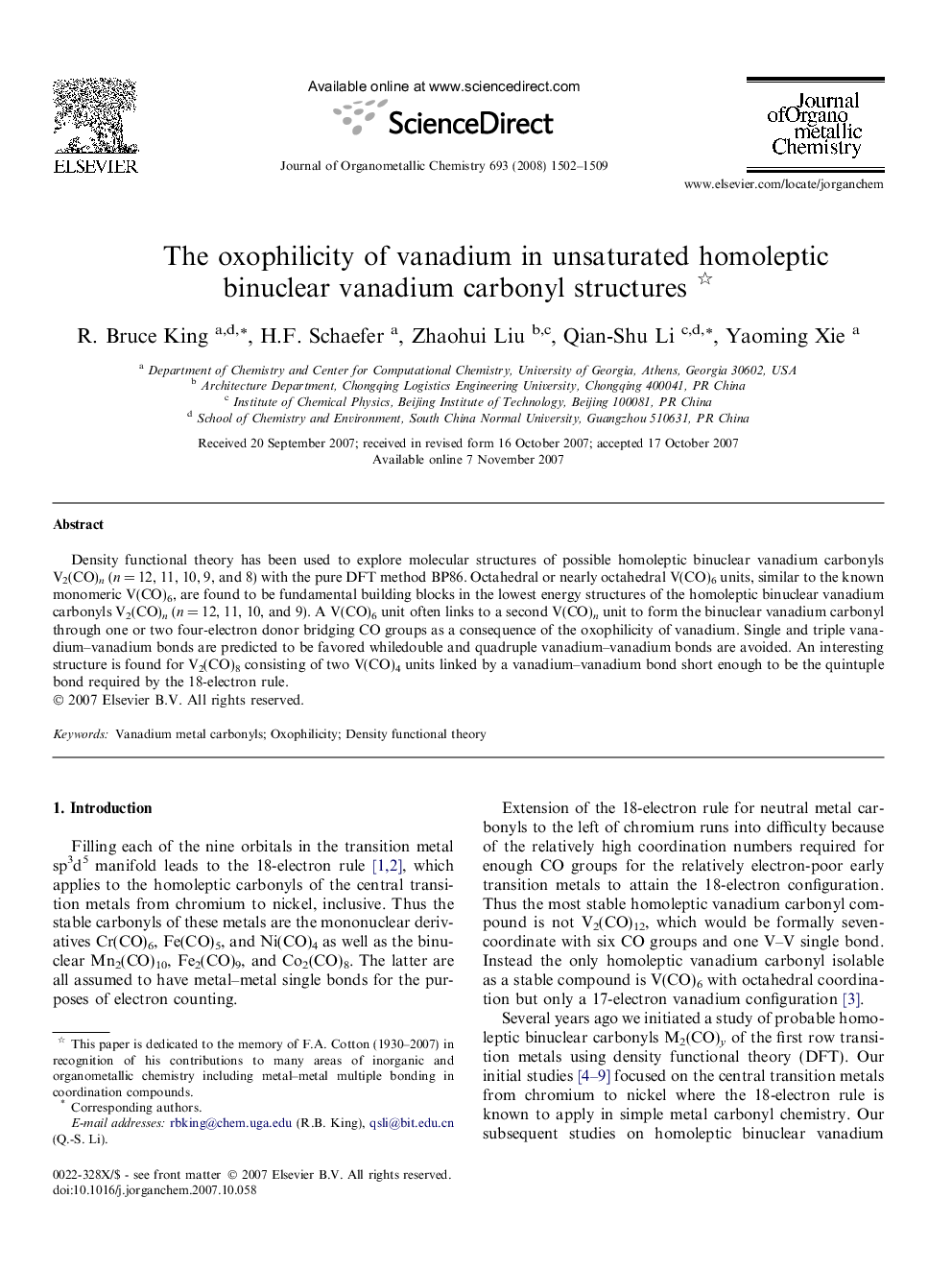| Article ID | Journal | Published Year | Pages | File Type |
|---|---|---|---|---|
| 1327985 | Journal of Organometallic Chemistry | 2008 | 8 Pages |
Density functional theory has been used to explore molecular structures of possible homoleptic binuclear vanadium carbonyls V2(CO)n (n = 12, 11, 10, 9, and 8) with the pure DFT method BP86. Octahedral or nearly octahedral V(CO)6 units, similar to the known monomeric V(CO)6, are found to be fundamental building blocks in the lowest energy structures of the homoleptic binuclear vanadium carbonyls V2(CO)n (n = 12, 11, 10, and 9). A V(CO)6 unit often links to a second V(CO)n unit to form the binuclear vanadium carbonyl through one or two four-electron donor bridging CO groups as a consequence of the oxophilicity of vanadium. Single and triple vanadium–vanadium bonds are predicted to be favored whiledouble and quadruple vanadium–vanadium bonds are avoided. An interesting structure is found for V2(CO)8 consisting of two V(CO)4 units linked by a vanadium–vanadium bond short enough to be the quintuple bond required by the 18-electron rule.
Graphical abstractDensity functional theory has been used to explore possible homoleptic binuclear vanadium carbonyls V2(CO)n (n = 12, 11, 10, 9, and 8) with the pure DFT method BP86.Figure optionsDownload full-size imageDownload as PowerPoint slide
